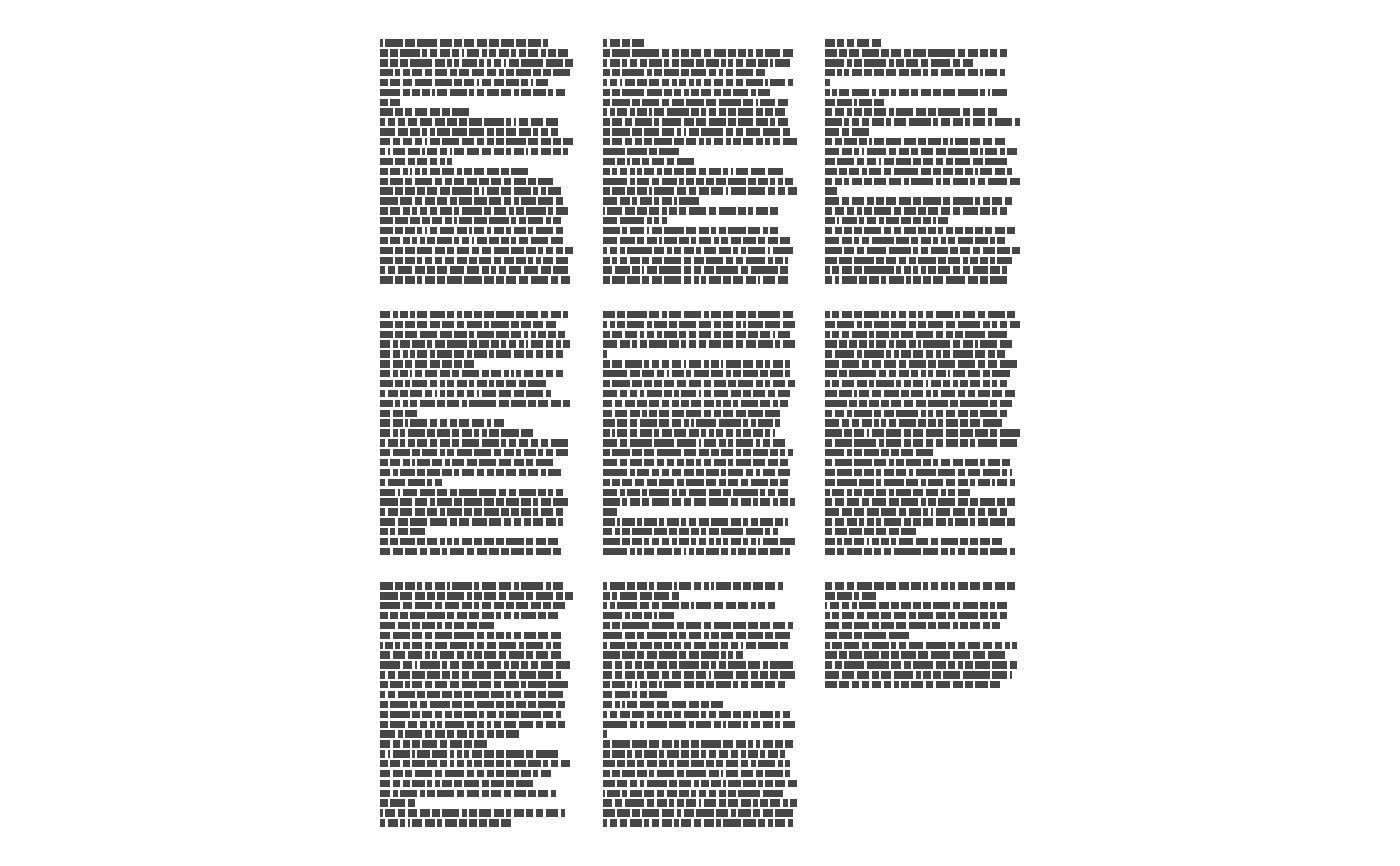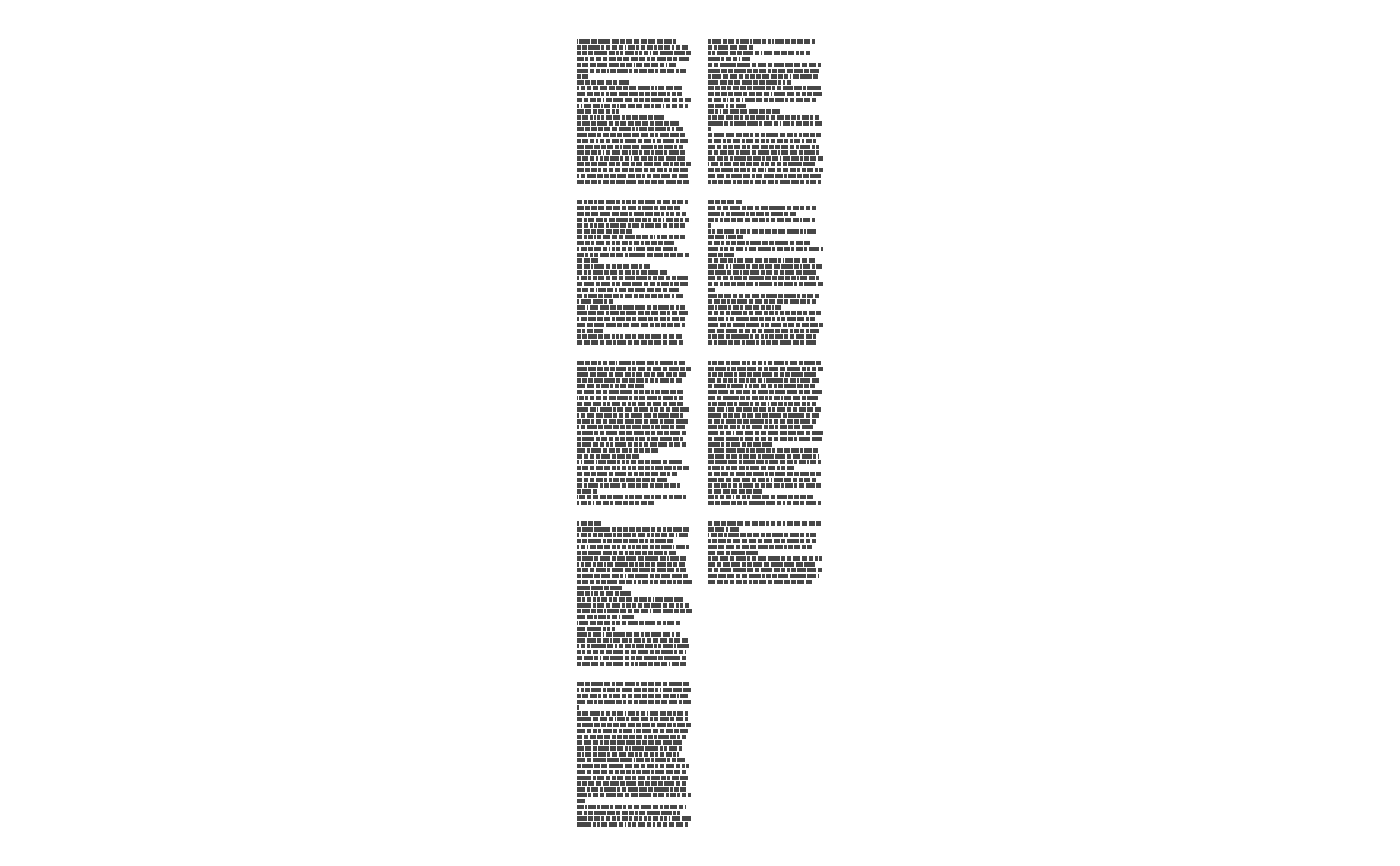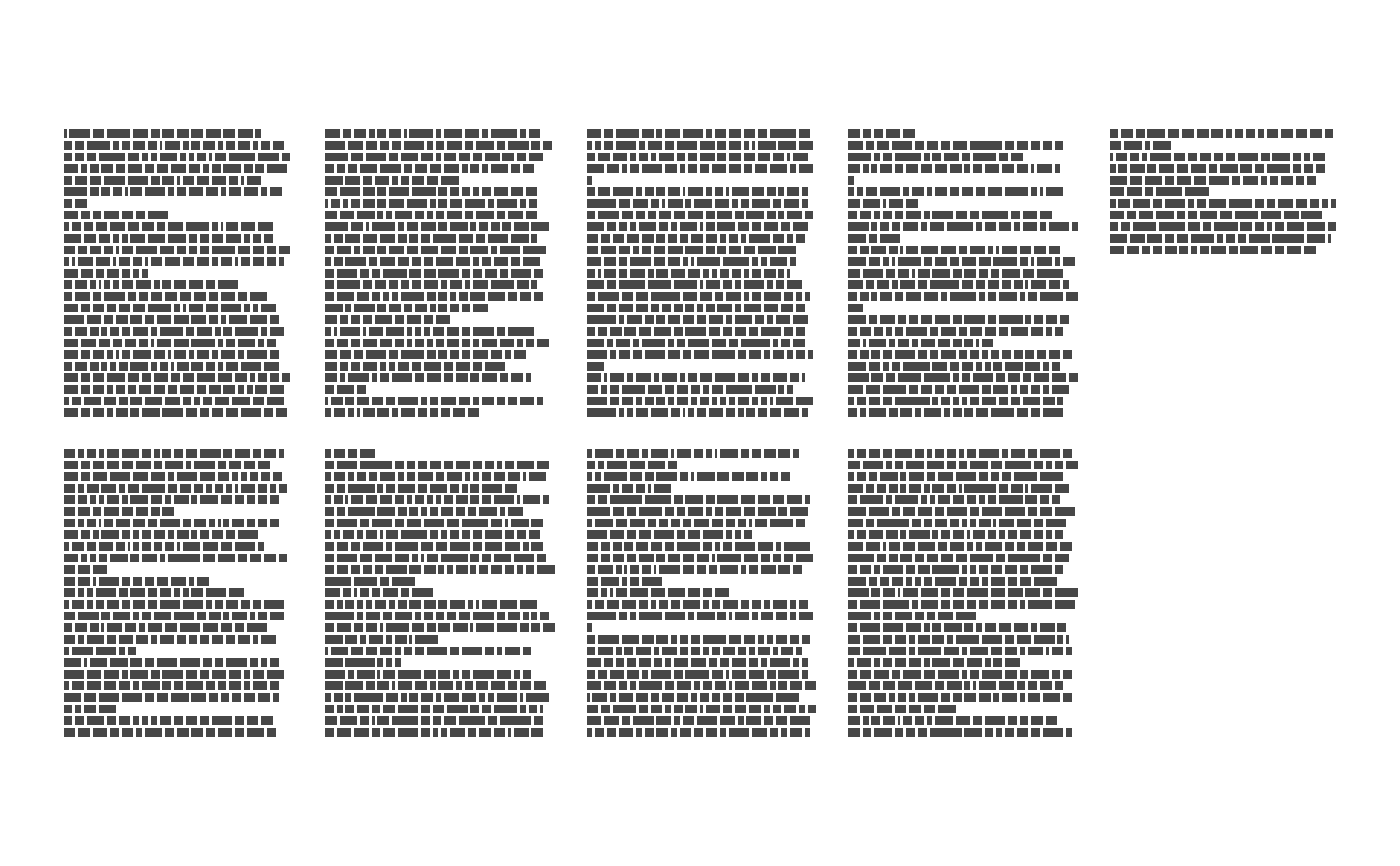Creates a quick visualization of the page layout
ggpage_quick(book, lpp = 25, character_height = 3, vertical_space = 1, x_space_pages = 10, y_space_pages = 10, nrow = NULL, ncol = NULL, bycol = TRUE)
Arguments
| book | Character or data.frame. Can either have each element be a separate line or having each element being separate words. |
|---|---|
| lpp | Numeric. Lines Per Page. Number of lines allocated for each page. |
| character_height | Numeric. Relative size of the height of each letter compared to its width. |
| vertical_space | Numeric. Distance between each lines vertically. |
| x_space_pages | Numeric. Distance between pages along the x-axis. |
| y_space_pages | Numeric. Distance between pages along the y-axis. |
| nrow | Numeric. Number of rows of pages, if omitted defaults to square layout. |
| ncol | Numeric. Number of columns of pages, if omitted defaults to square layout. |
| bycol | Logical. If TRUE (the default) the matrix is filled by columns, otherwise the matrix is filled by rows. |
Value
A ggplot object with the given visualization.
Examples
library(dplyr) library(stringr) library(ggplot2) library(tidytext) library(ggpage) # quick ## data.frame with full lines ggpage_quick(tinderbox)#> Error in check_input(x): Input must be a character vector of any length or a list of character #> vectors, each of which has a length of 1.#> Error in check_input(x): Input must be a character vector of any length or a list of character #> vectors, each of which has a length of 1.#> Error in check_input(x): Input must be a character vector of any length or a list of character #> vectors, each of which has a length of 1.# nrow and ncol ggpage_quick(tinderbox, nrow = 2)ggpage_quick(tinderbox, ncol = 2)


